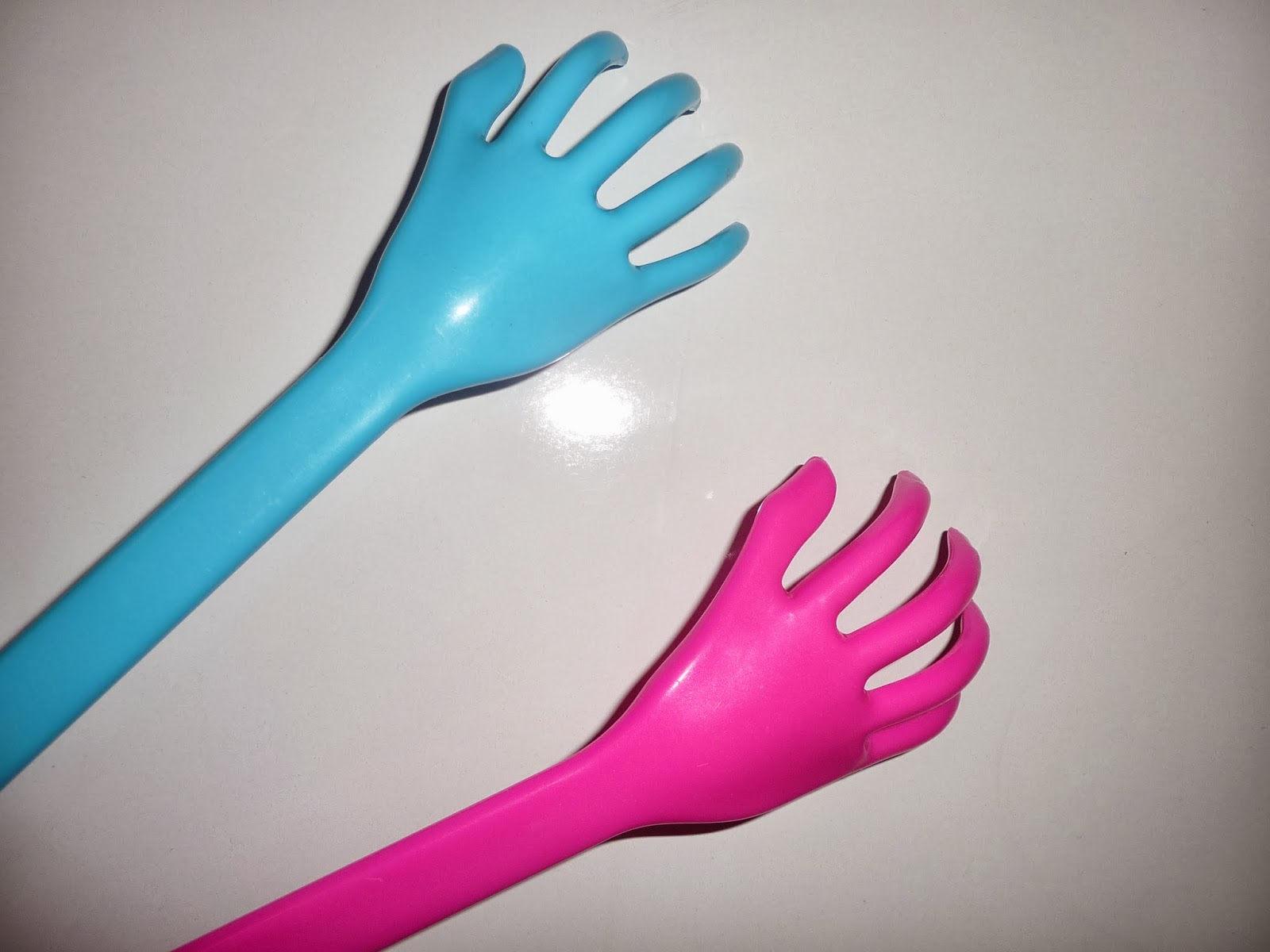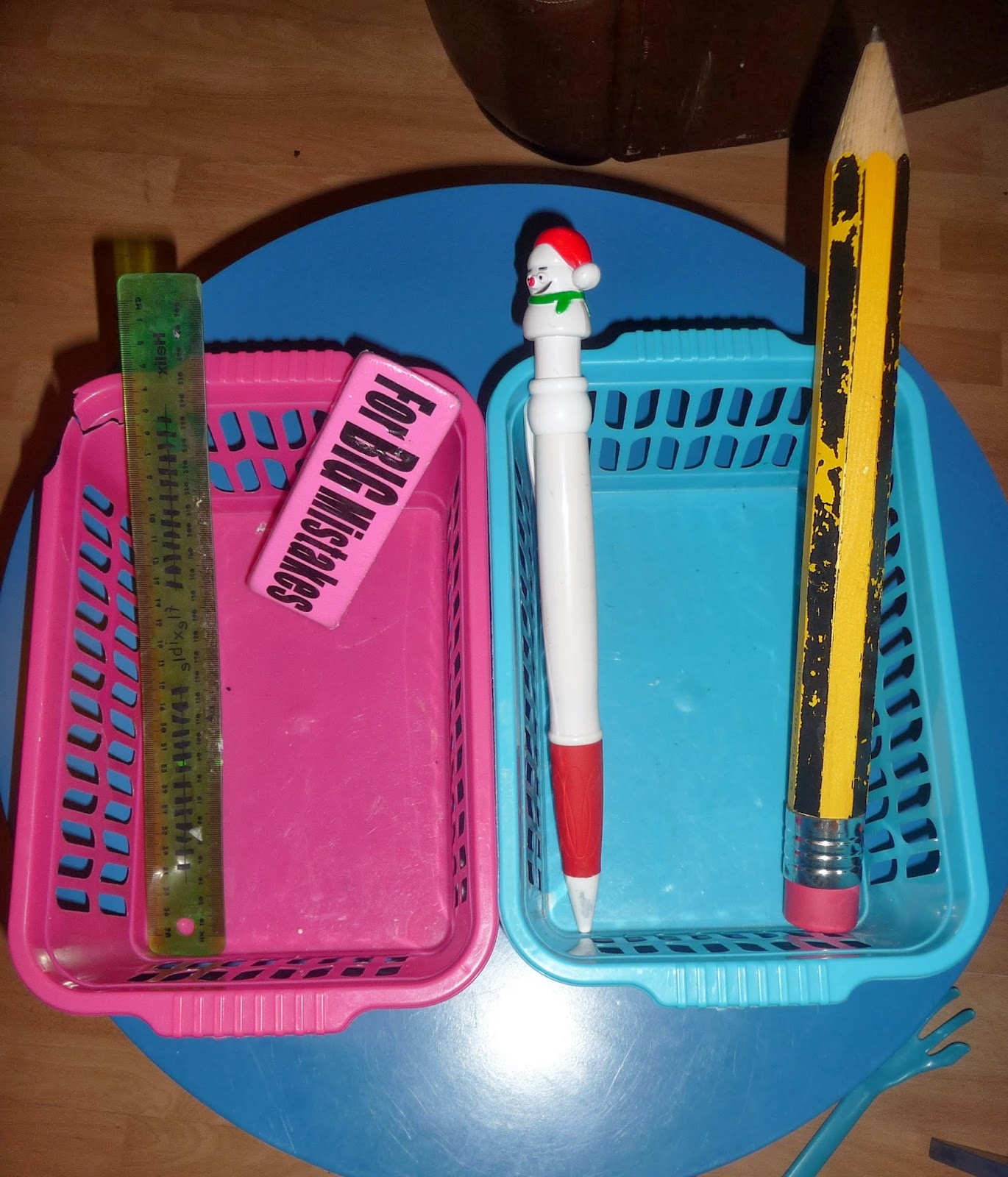In Year 3 we learn to talk about ourselves: "Me llamo Amber. Tengo 7 años. Vivo en Burscough. Soy inglesa." When we get to this last sentence I use my puppets to teach them about differences between what girls and boys say.
I have 2 friends from the airport duty free shop in Malaga, they are Rosa and Pablo:-). They teach us "Soy español" and "Soy española". We play the hot/cold hiding game with them and I ask about the differences in the 2 expressions. To avoid stereotypes I tell them that Spanish people don't look like these puppets and this year we were very lucky to watch our Spanish penpals' videos where they say "Soy español/a". When we get to "Soy inglés/Soy inglesa", my puppet from Greendale comes to help: Postman Pat! This is always a funny moment. But the best comes after this: I say that I haven't got an English puppet girl in my house so the shortest girl has to help us learn the sentence and hide in the classroom for the hot/cold game! I always ask whether there are any other nationalities in the classroom and we learn those, too. This year we added Annick and Albert to our puppets, I got them from Catherine Cheater after a twilight session and even though I don't teach French, we love having them around, we explain Spanish rules to them and sometimes they bring us French songs to show us some similarities with Spanish. This time we learnt "Soy francés/ Soy francesa" with them.
At the beginning of every lesson my parrot teddy flies around the classroom and asks questions, one of them is"¿Cuál es tu nacionalidad?". They always remember what to say but some of them want to be funny and say "Soy inglesa" (a boy) , then I pretend to be very shocked, we have a laugh and we repeat the rule.
Genders of nouns
The first time I mention genders of nouns is in Year 3, when we learn pencil case words. I say that Spanish nouns are either masculine or feminine, they are just like babies when they are born, either boys or girls, but in grammar they are called masculine and feminine words.
The genders are not in the focus of the lessons along year 3 and 4 but we play short games to keep the concept in our minds.
Whole class activity with pompoms (I have loads, you might remember them from my colours blog): I say a sentence/word and they show up the colour for masculine (blue) or feminine (pink).
1 pupil with the pink pompoms, 1 pupil with the blue ones in front of the class: they can only lift them up if they hear what they are holding. The one who makes a mistake sits down and picks another volunteer for her/him.
these pompoms are from poundland but you can make your own with tissue paper or crepe paper
Race between pupils out in the front: I say a word/sentence and they have to grab the appropriate pompom and lift it up quickly.
Wig race: Two volunteers will go to two different sides of the classroom, they will be wearing feminine/masculine wigs (all the hands will be up:-). I say :"Tengo un lápiz" and they have to get to the right wig quickly. You could make it more difficult by making the pupils choose the object first and then race to the appropriate gender wig. Alternatively, you could say the word/sentence and everybody has to turn and point to the right person.
the wigs are from Poundland
Who is quicker? I stick images on the whiteboard and 2 pupils have to race to touch them with the right colour dusters or shoe horns.
Another option is to make them put the objects in masculine/feminine baskets.
the baskets are from Tesco
And to get back to Postman Pat, we listen to the theme song in Spanish, which we find very funny! The lyrics are here.
I will blog about genders in Year 5 and 6 in another post.
I wish you happy teaching from my garden where even the tulips grow in gender cups!








Erzsi me ha encantado la clase. Yo también empiezo con el género en Y3 y nosotros lo que hacemos en convirtiéndonos en "Superheroes" , concretamente en "Superman" y así practicamos lo que llamamos "Las Super Reglas": "Super O" (masculino), "Súper A" (Femenino) y "Súper S" para plural. Asignamos gestos a cada una de ellas (al estilo kárate) y después hacemos competiciones y "luchas".
ReplyDeleteLa idea de la peluca y los pompones me han encantado así que me las guardo para poner en práctica cuando haga masculino/femenino. ¡Mil gracias! :-)
Hola Carmen, me encanta la idea de Súper O y Súper A:-))) Mi hijo está aprendiendo sobre Superheroes en el cole este trismestre, que coincidencia. Gracias por la idea! Ahora quería mandarte una actividad donde los alumnos tienen que disenar la "o" como si fuera un chico y la "A" como si fuera una chica, pero no puedo colgar una foto aqui, te la mandare en twitter.
ReplyDeleteA mis alumnos les entretiene mucho hacer las "Super Reglas" al estilo kárate asi que quizás a tu hijo le guste también. Muchas gracias por mandarme el link. Puede ser una gran idea para que los niños practiquen con la formación de letras ¡Fantástico! :-) En el link que te dejo a continuación , puedes ver a uno de mis alumnos como hace las "Super Reglas" ( en realidad el hace kárate asi que al ver el vídeo se nota ja,ja,ja )
ReplyDeletehttp://spanishrv.blogspot.co.uk/2013/11/como-me-gusta-la-fruta.html
Disfruta del sábado :-)
¡ME ENCANTA! QUE IDEAS MÁS ATRACTIVAS PARA LAS CLASES!! ASI DA GUSTO APRENDER OTRO IDIOMA!!
ReplyDeleteLOS PELUCHES DEL TORERO Y LA SEVILLANA SON GENIALES!!